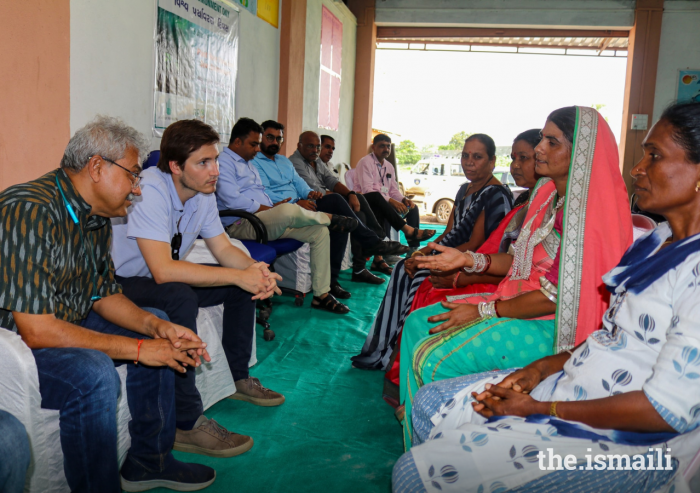The illumination of the Palace on Gandhi Jayanti — the day that Mahatma Gandhi was born — is the culmination of a painstaking restoration process undertaken by the Archaeological Survey of India (ASI). From repairing its roof to restoring its flooring, a massive effort has been underway at the Aga Khan Palace to revitalise the monument and its historical treasures.
Built in 1892 at the request of Mawlana Sultan Mahomed Shah, the Aga Khan Palace covers an area of 19 acres with a built up space of seven acres. Its two-storey structure is held up by a set of graceful Italian arches with wooden beams and stone and wooden flooring in the interiors. A sprawling garden surrounds the Palace area and houses the samadhis or tombs of Kasturbha Gandhi, Mahatma Gandhi’s wife, and Mahadev Desai, his personal secretary. Built at an estimated budget of 1.2 million rupees in those times, the Palace is considered to have been an act of generosity by Mawlana Sultan Mahomed Shah, to help the poor who had been devastated by a recent famine. In February 1969, during a visit to India, Mawlana Hazar Imam donated the Palace to the Indian Government. In 2003, it was declared a monument of national importance by the ASI.
Mahatma Gandhi’s connections to the Palace are well known. The palace grounds are home to his memorial and the palace itself houses archives of photographs and portraits of Gandhi during the independence movement. The connection goes back to 8 August 1942, when, in an impassioned speech at Gowalia Tank Maidan in Mumbai, Gandhi launched the India August movement and urged his fellow Indians to unite “in the common struggle for independence.” Gandhi and many of his followers were subsequently interned at the Palace from 9 August 1942 to 6 May 1944.
While Gandhi’s memorial, marking the site of his cremation, lies at Raj Ghat in New Delhi, his ashes are housed on the grounds of the Palace, said to have been donated in 1992, following which the Ismaili community in Pune donated money to build the memorial that would house them. That memorial stands on the Palace grounds today.
The palace’s role in Gandhi’s final years has made it a living museum to his life and philosophy. For several years it fell into a state of neglect and disrepair, but now the ASI’s recent efforts are restoring both the palace and the fragments of history that it holds.
“The conservation work started last year with the Samadhi,” said Gajanan Mandavare, the assistant conservation officer of the ASI Pune sub-division. “This year we have started with the palace area and hope to complete this in the next six months.”
The conservation efforts required at the Palace are extensive. Decades of water leakage have damaged wooden planks on the roof and the passage of time has chipped away at the stone flooring. ASI plans to carry out extensive waterproofing of the interiors of the palace to prevent further water damage to the wooden planks and beams. Much of the stone flooring has already been restored and the palace has been given a fresh coat of paint.
Efforts are also underway concurrently to revitalise the museum of artefacts, pictures, and portraits that pay tribute to Gandhi and his role in the freedom struggle. The ASI team is working on the chemical conservation of textiles in the Palace (such as the clothes of Mahatma Gandhi and his wife) and is also looking at digitising the images that are part of the collection.
“We want to make this a place that meets international standards,” said Mandavare. “We see 400-500 tourists daily and approximately 1,000 tourists every weekend.” ASI’s planned initiatives include constructing a baggage room and toilet blocks for visitors. The ASI team has already developed a road around the palace, built a proper parking lot, and repaired the brick walls that surround the Samadhi area.
For local Pune residents and the Ismaili community, the restoration of the palace is welcome news. For the Jamat in particular, a restored Palace will bring a renewed sense of pride and happiness about a structure that has been part of the community’s collective memory for many decades. For ASI, the restoration of the Palace promises to increase visitor traffic and allow many more Indians and tourists to engage with Gandhi’s life and legacy in contemporary times.
To foster this engagement, and as part of its plans to celebrate the 150th birth anniversary of Mahatma Gandhi, the Union Ministry of Culture plans to refurbish the Palace’s picture gallery and create a digital and interactive display of Gandhi’s life and times. The ASI is also reportedly making arrangements for Gandhi’s speeches to be heard so that visitors to the Palace have a multi-sensory experience when they visit.
On 2 October, the palace opened its doors to an all-religion prayer meet to mark the 150th birth anniversary of the man who was celebrated for his views on tolerance and non-violence. Beyond being merely a home for the past, the Palace continues to be transformed into a living, breathing memorial to Gandhi’s values and philosophy.








